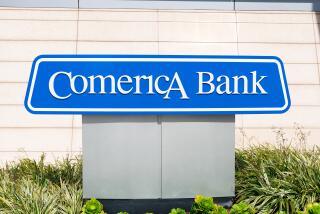FHLBB Study Details Threat to FSLIC Fund
- Share via
WASHINGTON — Almost 14% of the nation’s federally insured thrift institutions were technically insolvent in 1984, posing a potential risk of $15.8 billion to the federal insurance fund, according to a staff study by economists at the Federal Home Loan Bank Board.
The report, disclosed during a Senate Banking Committee hearing Thursday, dramatically underscored the problems facing the nation’s savings and loan industry.
The $15.8-billion potential drain on the federal insurance fund, which protects deposits up to $100,000, dwarfs the fund’s assets, which totaled $5.6 billion at the end of 1984.
While the study provided a stark view of the financial health of many of the nation’s savings institutions, officials emphasized that it showed a worst-case scenario that is not likely to happen.
13.7% Technically Insolvent
The bank board staff study reviewed the assets of the nation’s 3,167 federally insured savings and loans in 1984 and found that 434 of the institutions had liabilities either greater than or equal to their total assets.
This means that 13.7% of the nation’s federally insured thrift institutions were technically insolvent last year. The bank board economists estimated that, if all of these institutions were to fail, the cost of covering the federally insured deposits would total $15.8 billion.
Bank board officials have estimated that failing institutions are likely to cost the insurance fund--the Federal Savings and Loan Insurance Corp.--$1 billion this year.
The contents of the study were brought up during questioning of Edwin J. Gray, chairman of the bank board, by Sen. William Proxmire (D-Wis.). Gray said one way the bank board was trying to address the issue was by recommending that Congress allow regulators to charge higher insurance premiums for thrifts that were engaged in risky loan practices.
More to Read
Sign up for Essential California
The most important California stories and recommendations in your inbox every morning.
You may occasionally receive promotional content from the Los Angeles Times.










